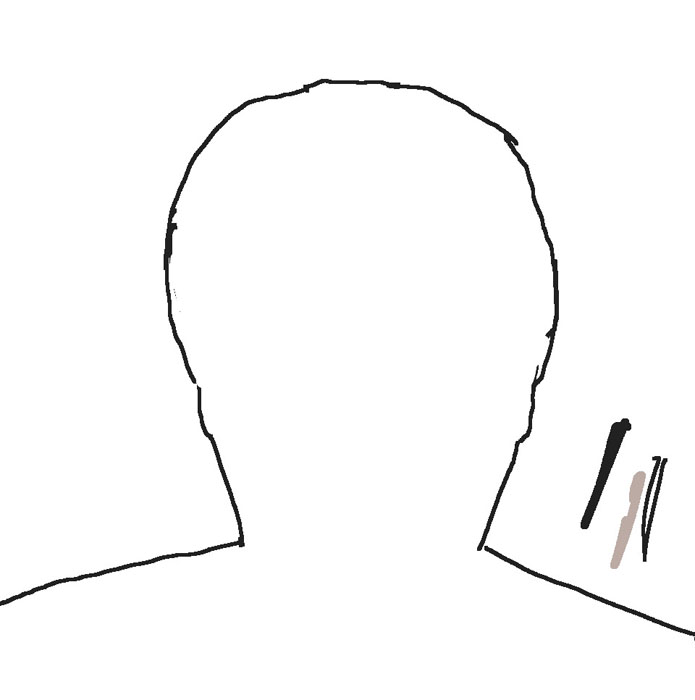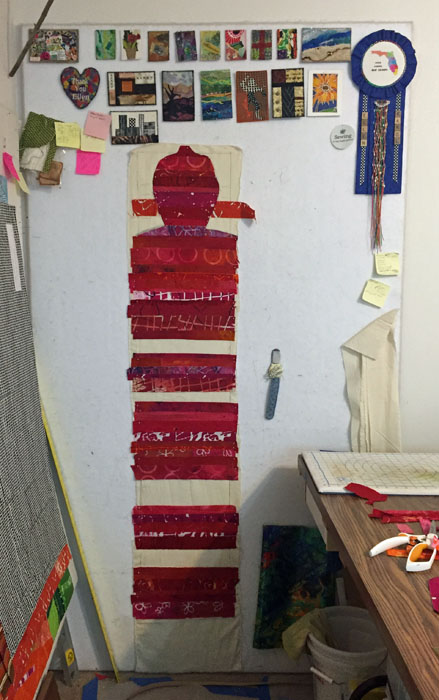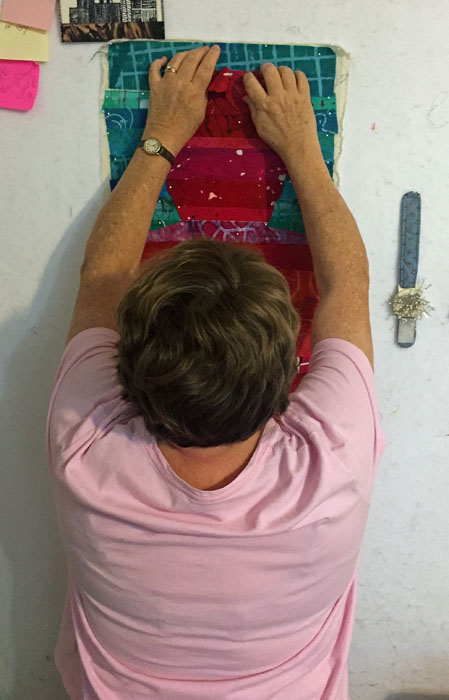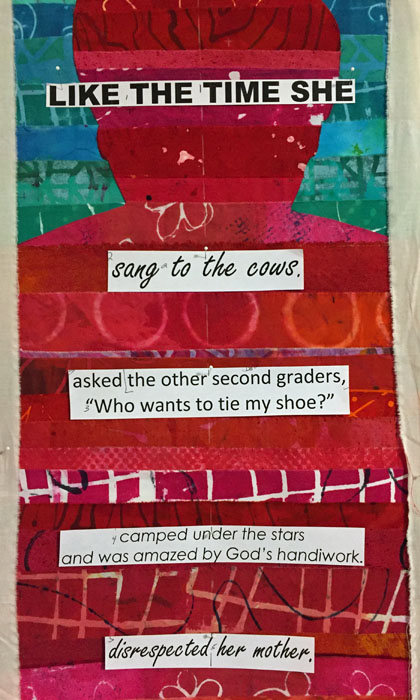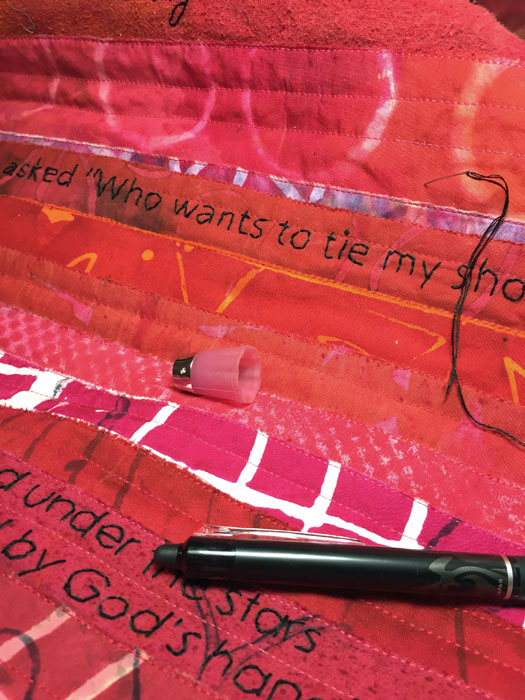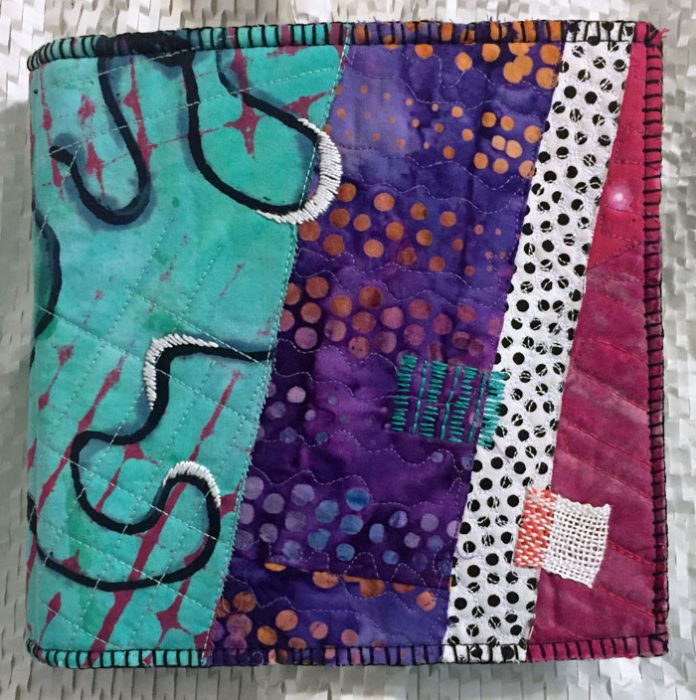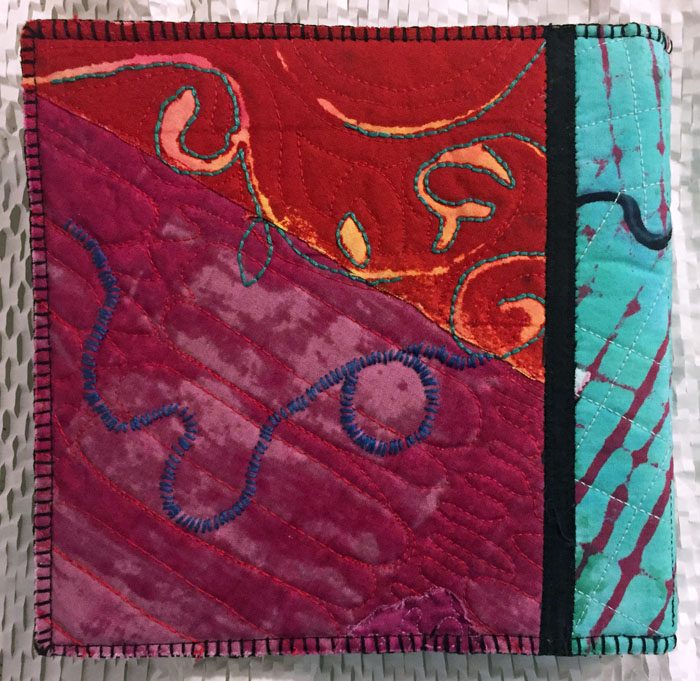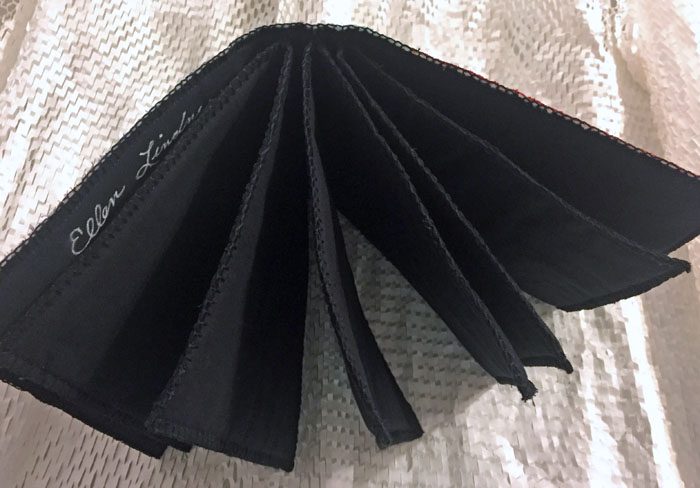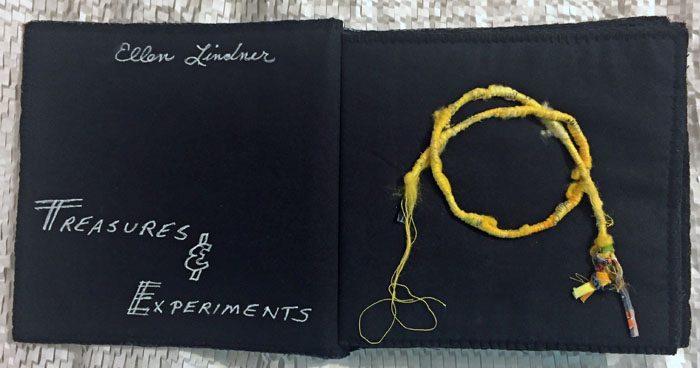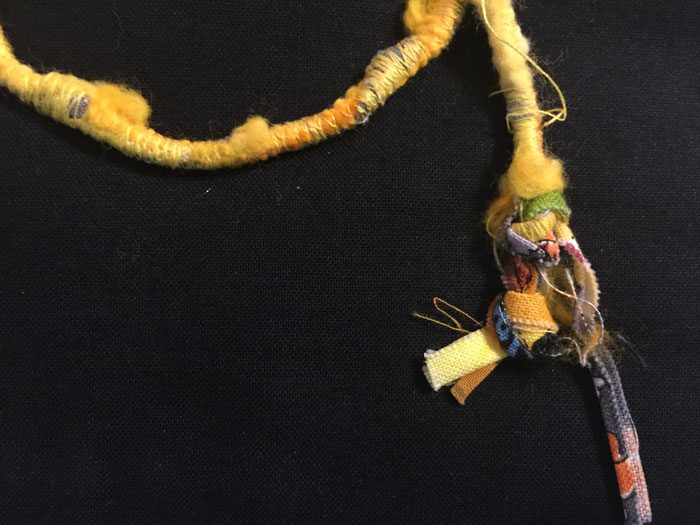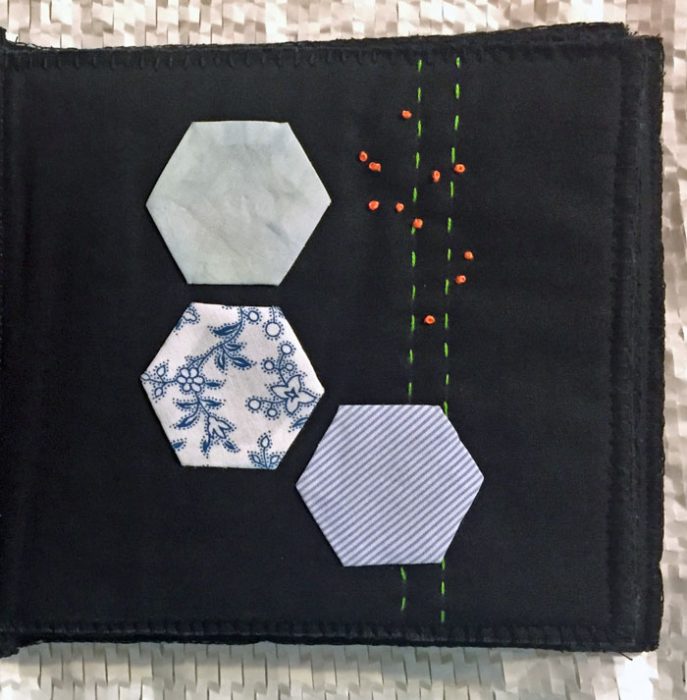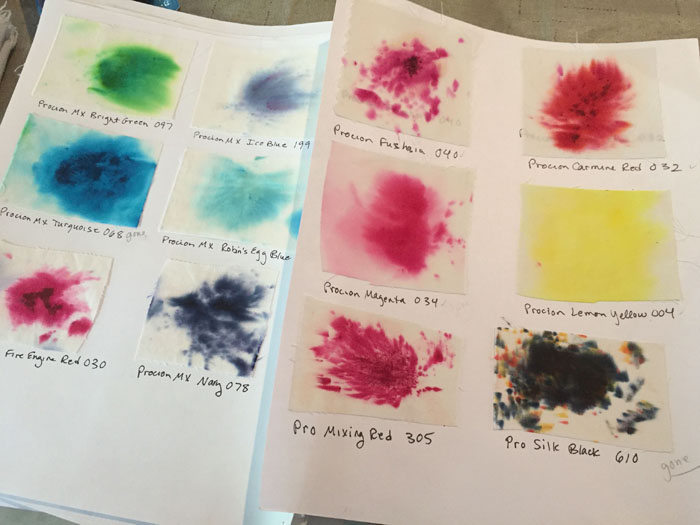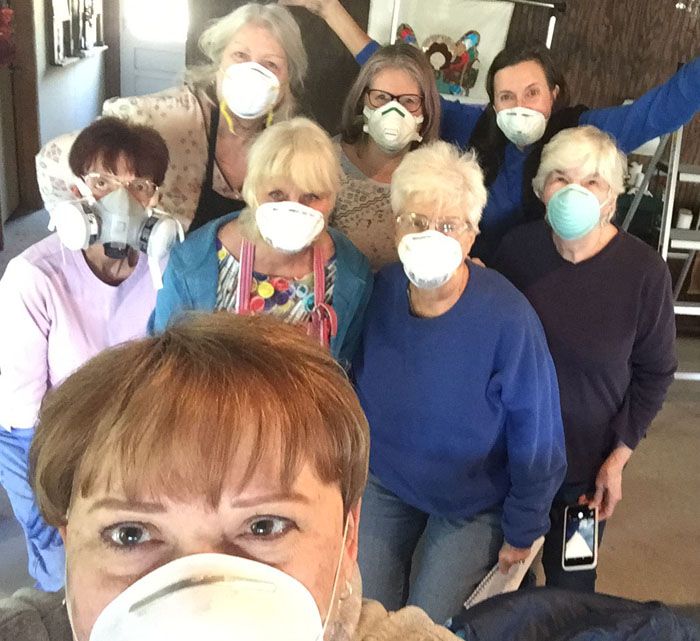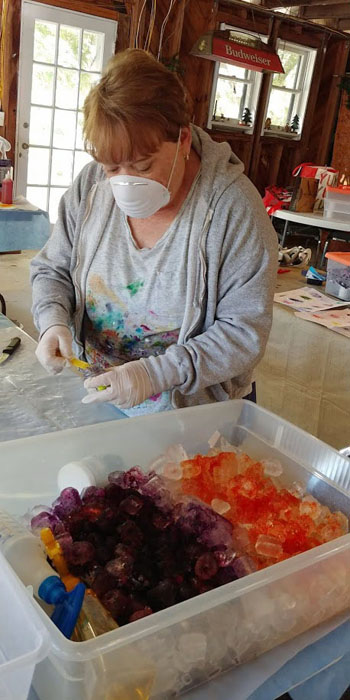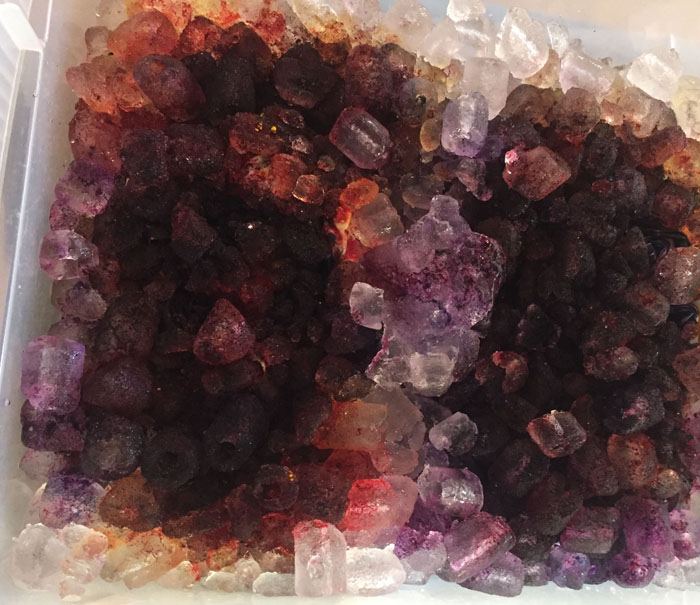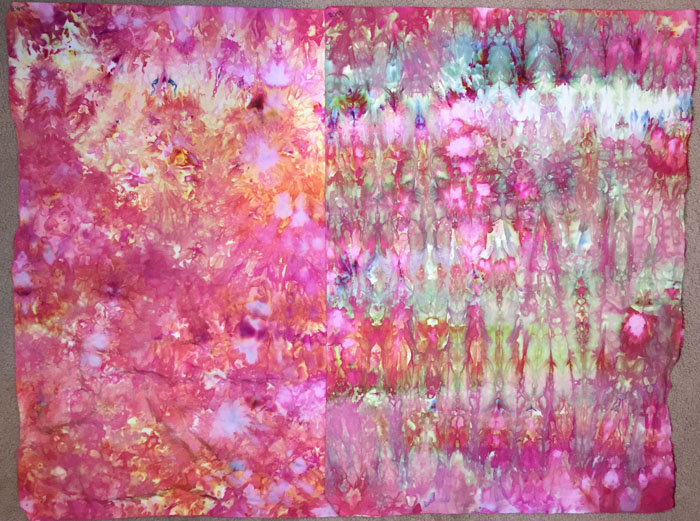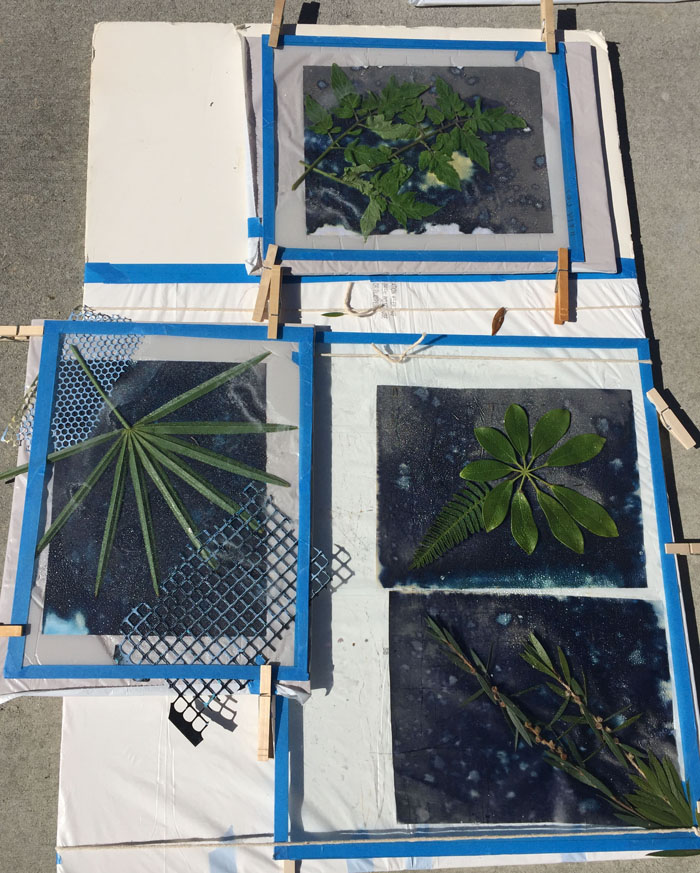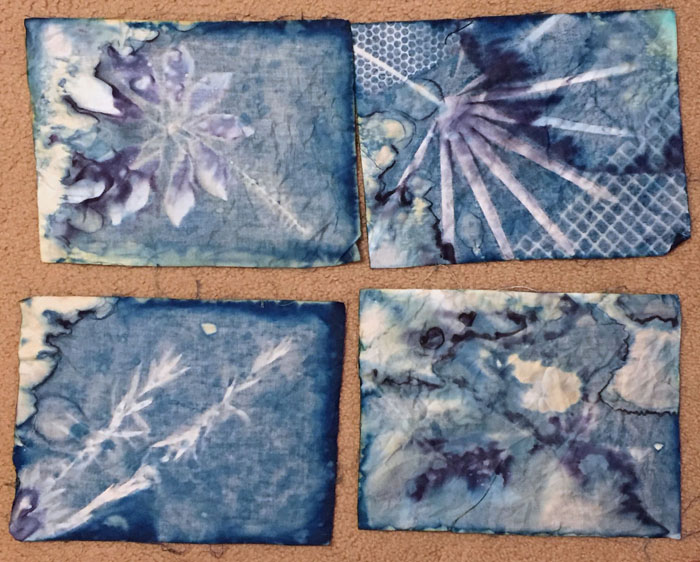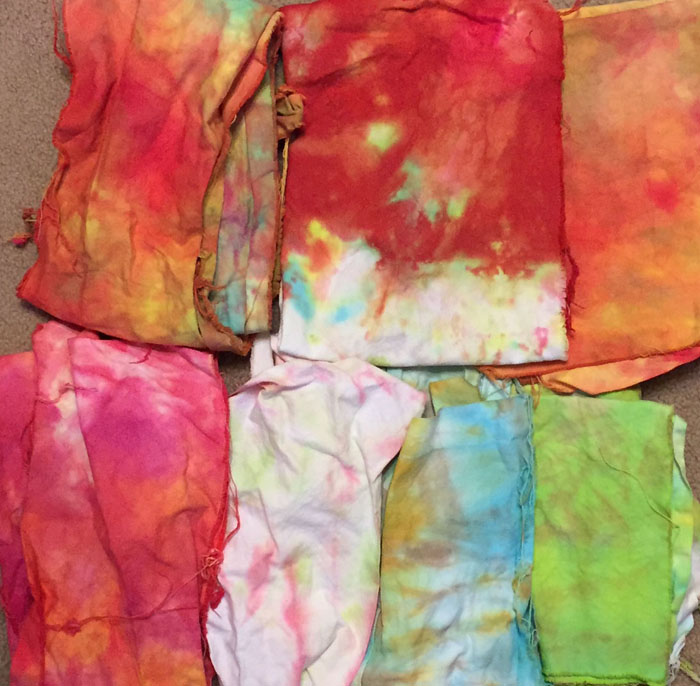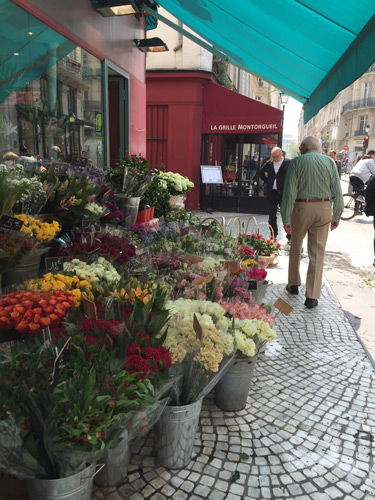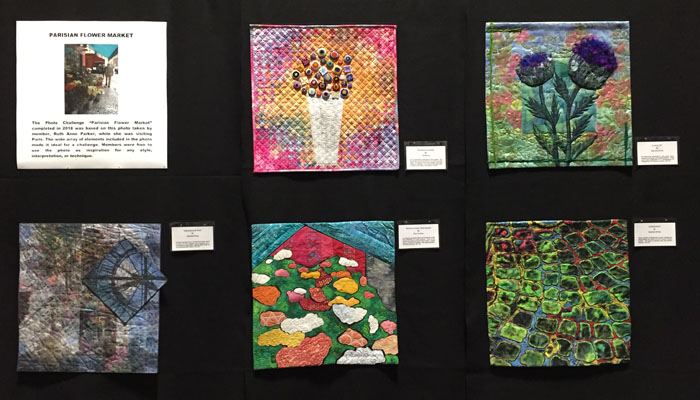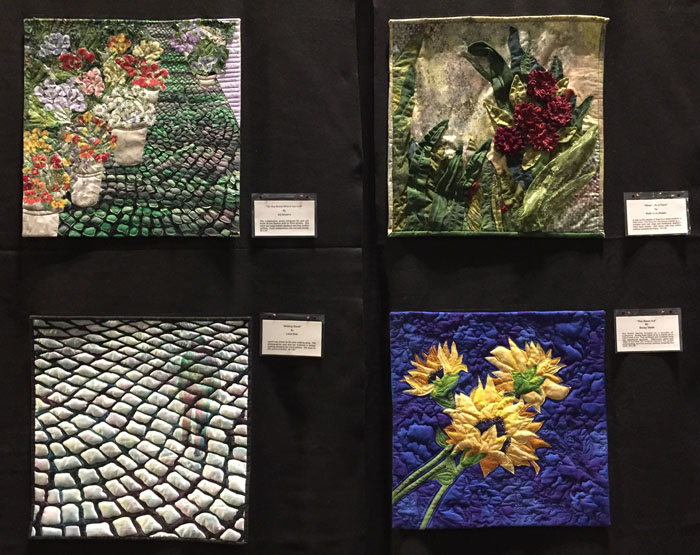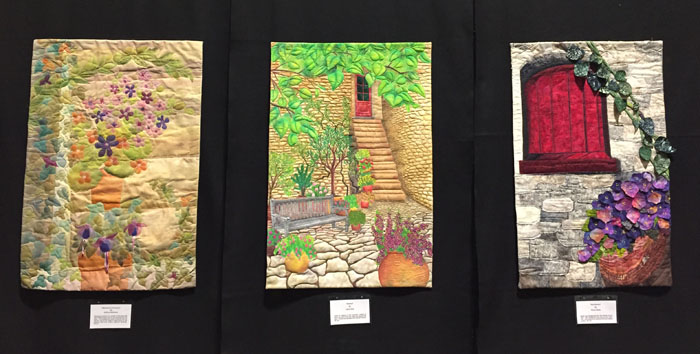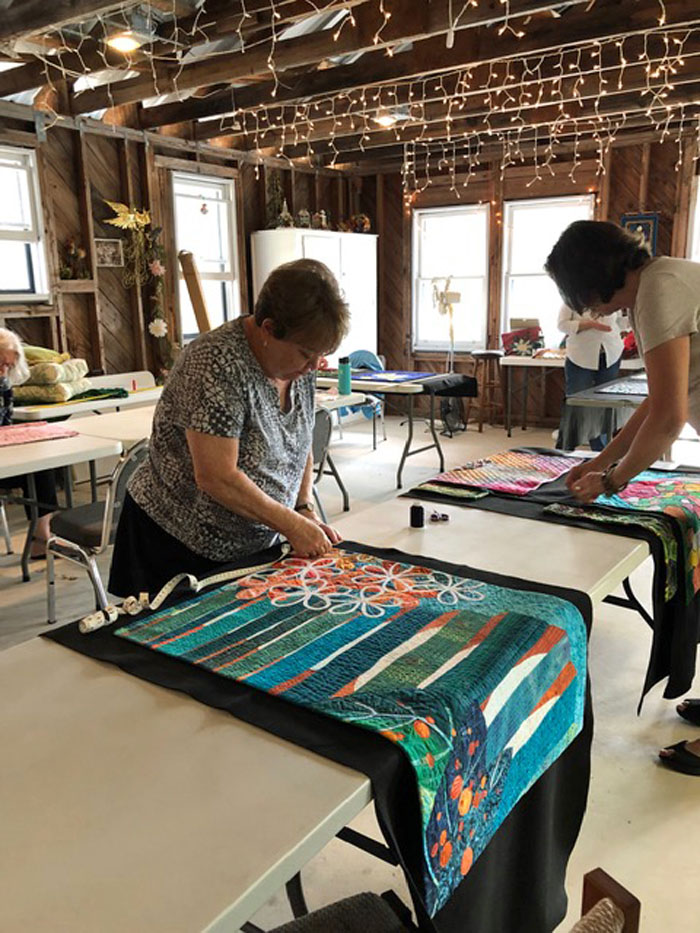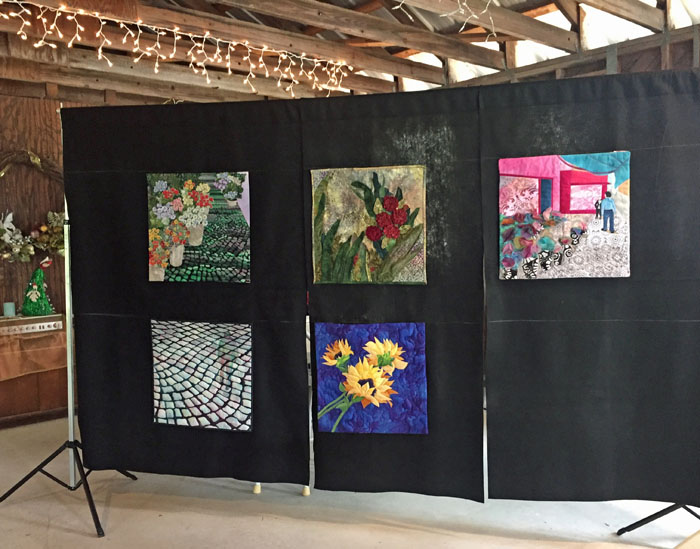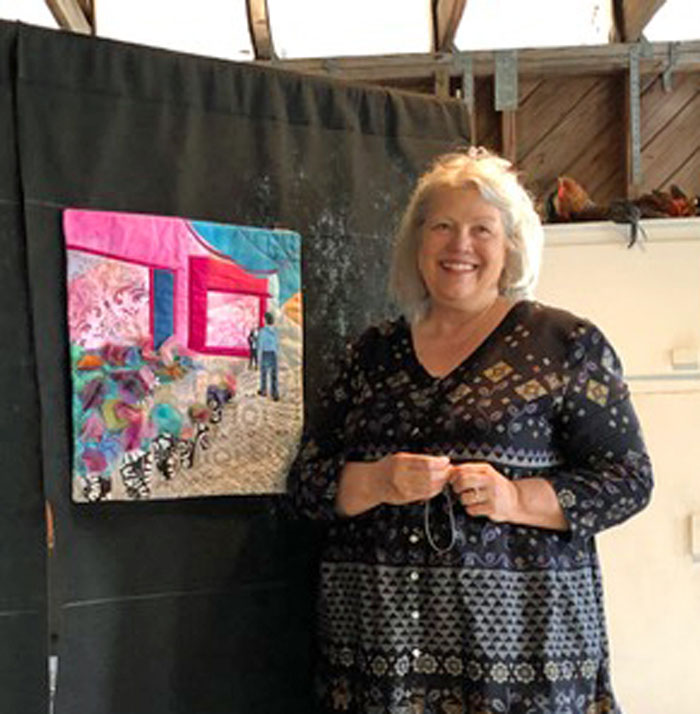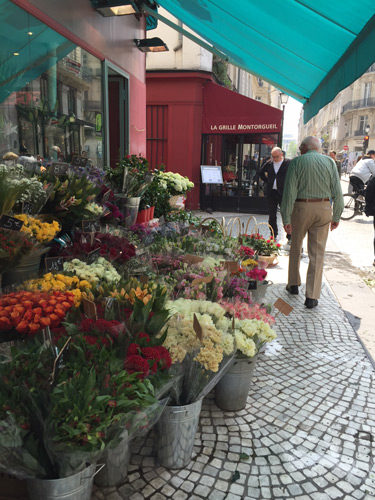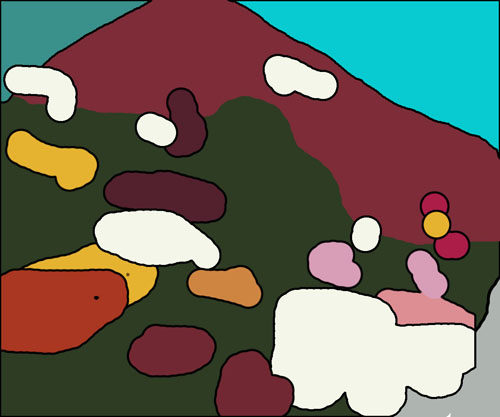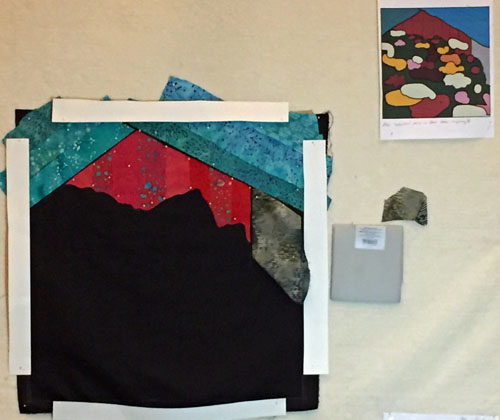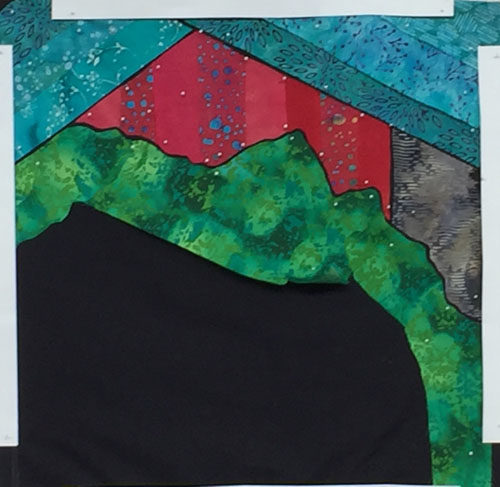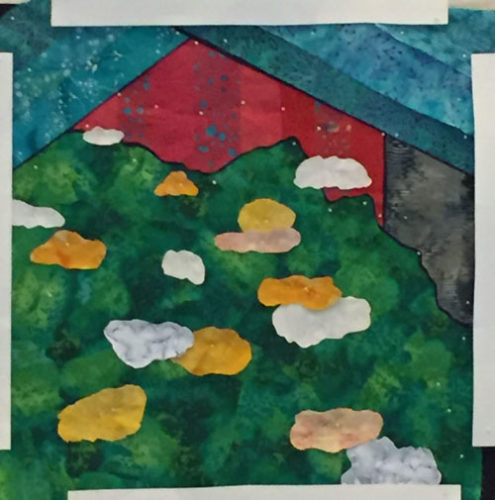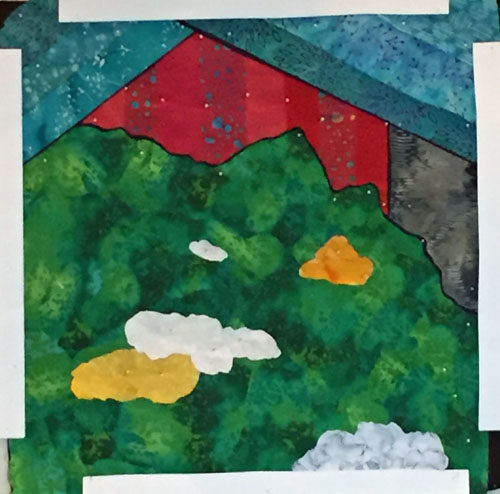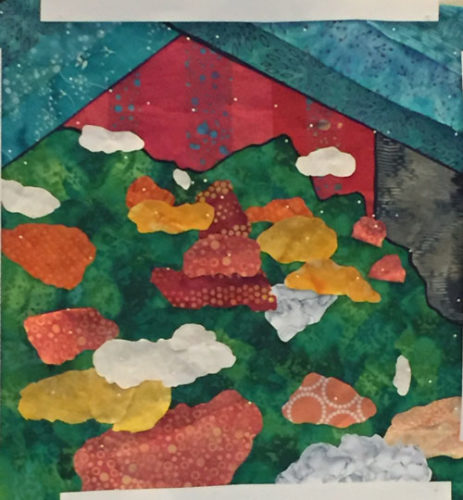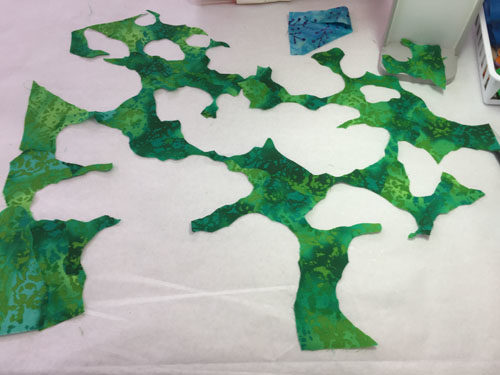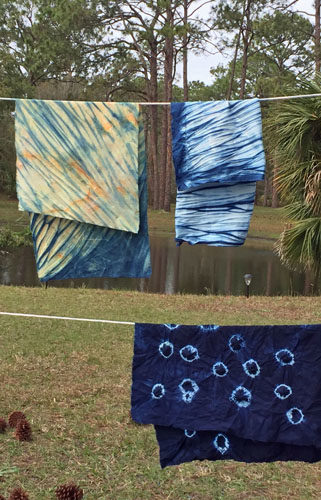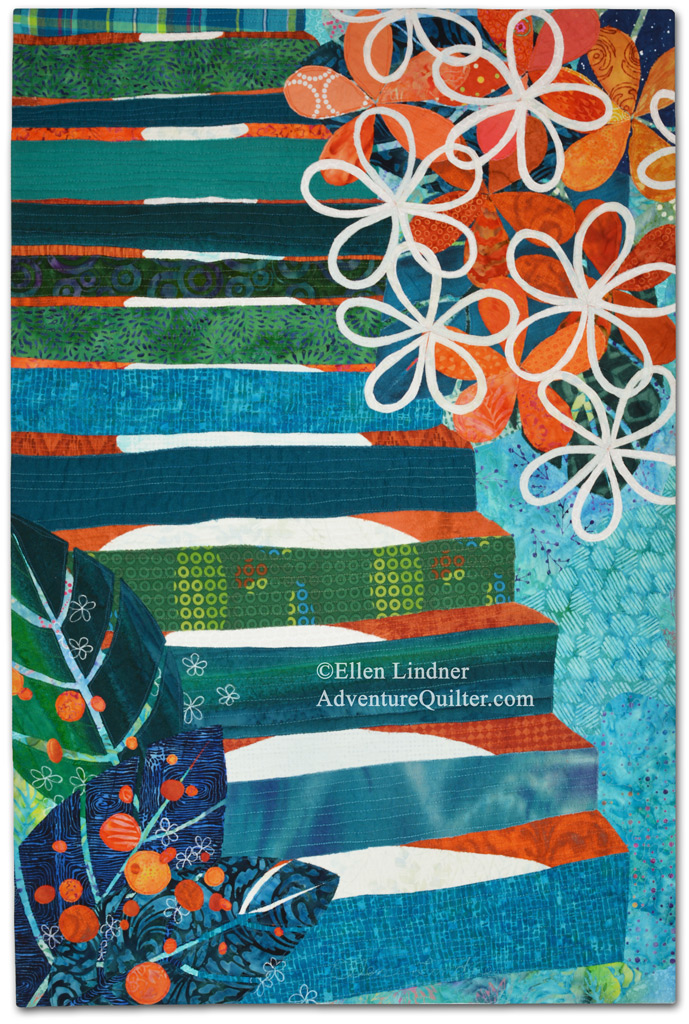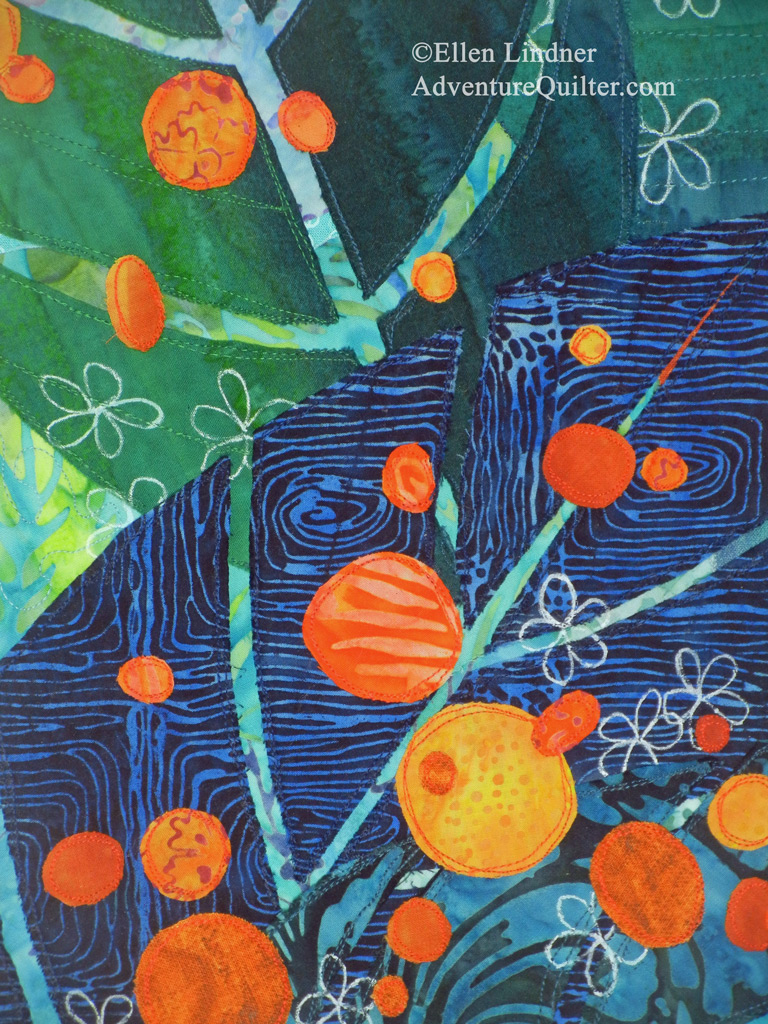My art quilt group, the Dirty Dozen Fiber Artists, have a really interesting challenge going on. We’re all making self-portraits, each the height of the maker. Isn’t that a cool idea? They also have to be skinny: no more than 12″ wide.
I wanted to include a lot of text in mine, stating my characteristics or attributes. I decided a composition with horizontal lines would lend itself to this. But, I also wanted to add my own head. That was surprisingly difficult, but I finally got it.
Working on my design wall, the horizontal RED stripes became my body. I used my hand dyed fabrics, paying attention to scattering in a variety of patterns and scales. But, I also aimed for a lot of quiet (near solid) areas that would show off text.
My primary design wall is only 4′ tall, so I had to work on my alternate one, above. It’s 7′ tall and I’m only 5′ so it provided plenty of room. (BTW, the bump on the top of my head will be lost in the trimming and seam allowance. I always want the design to extend into the seam allowance, so the bump acheives that.)
I initially planned to use orange in the background around my head. But, I worried that it didn’t provide enough contrast. A quick audition confirmed the problem.
I tried again with blue-green. Much better.
The height of this piece meant that I was frequently working above my head. S-T-R-E-T-C-H.
This is what it looked like with the composition complete. No stitching or text yet. I was very happy with it!
When selecting the text for my self-portrait I switched from attributes to actions. I selected some cute and complimentary things, but also some not-so-flattering confessions. I printed out everything in a variety of fonts and began to audition placement.
I transferred the text to the unquilted quilt. Then, I quilted it with horizontal lines. And finally, I started hand stitching the text.
Oh my, that took a LONG time!!! (I think I’ll use marker next time.)
Now it’s almost complete and you’ll find it on my website soon.
Ellen Lindner

